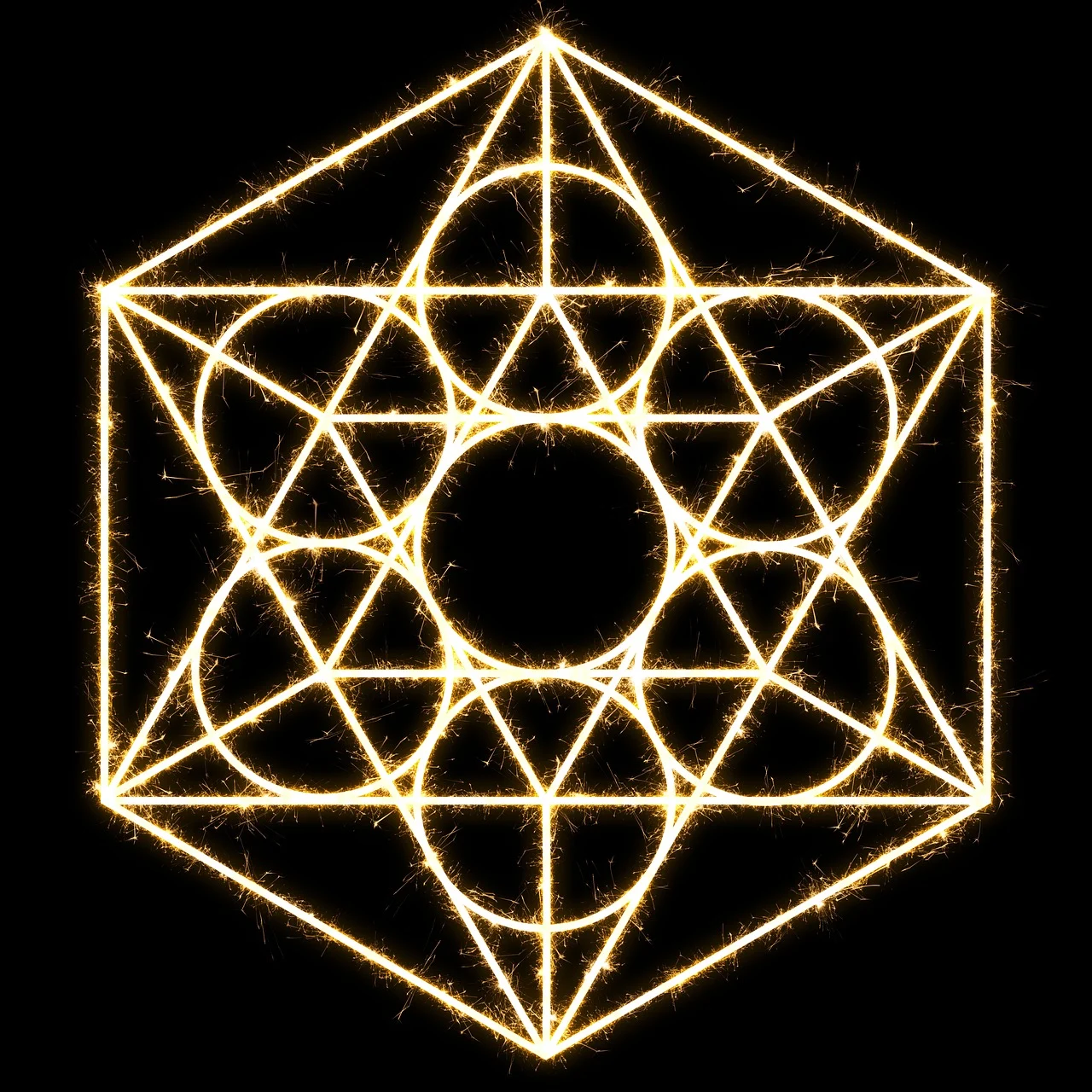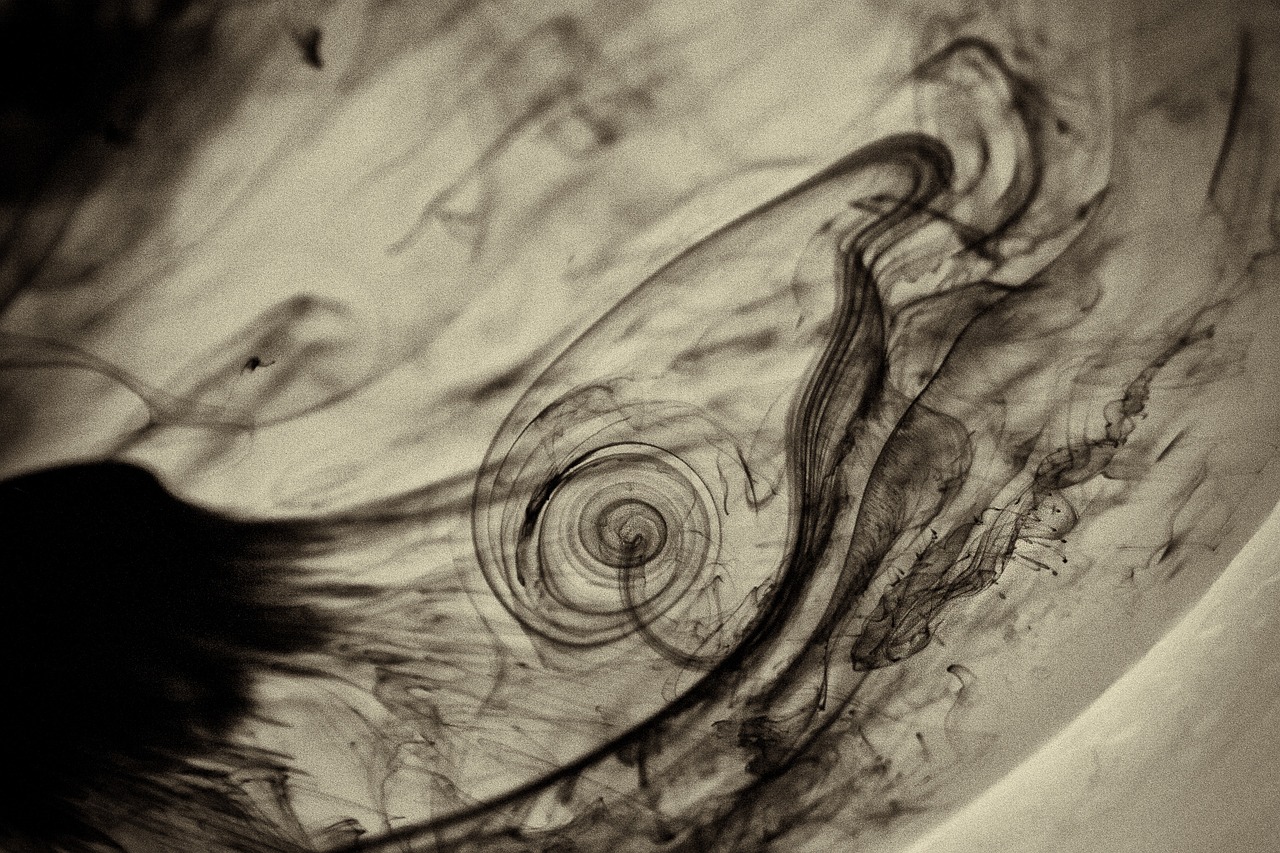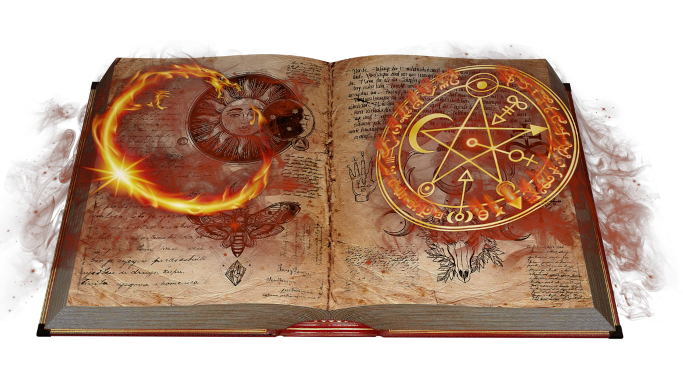Abyssal Magic
The Abyss is anything and everything and nothing at all. It is a swirling mass of dreams and nightmares just across the veil separating illusion from reality. Magic is art of reaching out and pulling one of those dreams to our side.
Abyssal magic is an otherworldly power drawn from the parallel realm of the Abyss that has the power to reshape the natural world. Magic is a chaotic, dangerous, and unpredictable force. Although it has the potential to create miracles, abyssal magic more often creates widespread destruction when it is let loose from the Abyss.
Channeling Magic
Channeling power from the Abyss requires three components: a conduit, a catalyst, and a sacrifice.
The conduit is the mold into which abyssal essence flows. The shape and structure of the conduit determines how the magic will manifest in the natural world. Depending on the type of magic used, the conduit can be drawn symbols, ritually arranged objects, or even the witch themselves.
However, a conduit alone is just some scrawled symbols. Supernatural power will only begin to flow through it when the conduit is activated by a catalyst.
A catalyst is either a series of spoken words or a physical object that acts as a key to unlock the magic. Catalysts also must be accompanied by intent. Magic cannot be cast by accident. A witch must consciously choose to use their catalyst and activate their magic, even if they do not necessarily know what their conduit will summon.
A sacrifice of blood to the Abyss is also required to perform magic. When catalyst activates the spell or ritual, abyssal magic will flow through the conduit and consume the sacrifice, and then perform the spell in exchange. Most rituals require very little blood, sometimes only a few droplets, but without this vital component the magic will have no effect.
Symbolic Magic
Symbolic magic is the most versatile and also the most unpredictable method to accessing the power of the Abyss.
Conduit
The conduit is formed by a combination of written words, geometric patterns, and material components all bound together in a ritual. The line strokes, the drawing material, and the placement of symbols all affect the flow of magic when the conduit is activated. Even the slightest variation can drastically alter the end results of the ritual.
With so many possible components and outcomes, symbolic magic is widely considered the most dangerous and tempting variation of magic. Anything could be possible with the right combination of lines and materials.
Catalyst
The catalyst for a symbolic ritual is a spoken incantation. The words must be spoken in exactly the right order to be used as a catalyst, but they do not correspond to any specific ritual. There are hundreds of known incantations hidden in ancient manuscripts and occult texts, and a witch only needs to learn one to activate any conduit they need.
Symbolic magic is generally considered a dark form of magic. Not only is a blood sacrifice required, but preparing the ritual incorrectly will cause the magic to manifest in an unpredictable and often destructive form.
Innate Magic
The witch crouched low on the slick rooftop and gazed out over the city. With one hand, he gripped the edge of a rain gutter to keep his balance, and with the other he stroked a simple whale bone comb in his pocket. In a moment, a cloud of black mist and darkness enveloped the witch, and in the next moment he was gone.
Innate magic is an individual supernatural ability that a witch possesses and can use without the need for a ritual.
Conduit
Instead of symbols and runes, the witch themselves acts as a living conduit. Every innate magic wielder has their own specific individual ability. It is theorized that the structure of an individual's genetics act like the lines and runes of a symbolic conduit by channeling magic in a highly specific way, and that manifestation cannot ever be changed.
Great oceans that fly above the sun. Prismatic droplets raining to the writhing skies below. Spiral down to risen hope and spread to earnest eyes. Now, Aurora Spear.
Catalyst
Instead of an incantation, the catalyst for innate magic can either be a spell or a token. Spells, similarly to incantations, are a series of often nonsensical words spoken by a witch to activate their abilities.
Spells are unique to each individual person. The words will gradually come to them during the dreams of the Abyss that mark the first stage of abyssal corruption.

Spells require time to recite, so most witches will use a token instead. A token is any object with intense memories and emotions surrounding it such as a memento from a loved one or a reminder of a traumatic disaster.
The object itself doesn't matter, but the emotions attached to it do. More intense emotions increase the strength of the magic. As long as they are carrying the token somewhere on their person, a witch can activate their innate magic with just a thought.
Sacrifice
Innate magic still requires blood, but the payment is taken directly from the witch's body as the magic is flowing through them. Very little of their blood is consumed with each use, often not enough for them to notice. However, if a witch overextends their abilities in a short period of time, the gradual loss of blood will cause them to feel drained, lightheaded, or even result in unconsciousness. Death has also been known to occur in extreme circumstances. Even if they overextend themselves though, a witch can recover from their sacrifice with enough rest and care.
What cannot be undone is the corruption that takes hold of all witches who channel the otherworldly power of the Abyss through their own bodies. The corruption begins by turning a witch's blood black and gradually crystalizes their body as it spreads. The condition will eventually debilitate and kill its victim if allowed to progress into its late stages.
The speed of its spread is determined by how often a witch uses their magic. Those who use their abilities often like the professional Kamesh Sorcerers are usually forced to retire after about three decades.
Perception of Magic
Although anyone can learn to cast magic, very few ever do. Not only is abyssal corruption a high price to pay, but societies in Leitoria are generally wary of the craft.
Abyssal magic is intrinsically tied to the Archdemons of the Abyss and serves as a reminder of the ancient The Ivory Age when humans were enslaved under them. In more recent times, there have been more than a few notable incidents when power hungry witches, whether intentionally or not, have summoned horrific nightmares from the Abyss that tore apart everything around them.
Views can vary on the subject, but innate magic is generally seen as the most acceptable form of magic. Incorrect or incomplete spells simply have no effect rather than summoning and eldritch horror, and the necessary blood sacrifice must be paid by the witch themselves.
Symbolic magic on the other hand is widely viewed as ritual blood magic only used by dark witches. Incantations are hidden away or destroyed, and the practice is illegal in most nations.
Terminology
Witch is a gender neutral term used to describe any person who uses abyssal magic.
Sorcerer is a gender neutral title for a professionally trained witch.
A conduit determines the end result of the magic and is usually a ritual or series of drawn symbols.
A catalyst is the key that activates the flow of magic through the conduit.
An incantation is a type of catalyst that can activate any symbolic conduit through spoken words.
A spell is a type of catalyst that can activate a witch's innate magic through spoken words.
A token is a physical object that acts as a type of catalyst that can activate a witch's innate magic
Black and White Magic
Often when a witch casts magic, small obsidian-like crystals will briefly flicker into existence along their hands, arms, or the corners of their eyes. These crystals are illusions, unlike the very real ones that form during abyssal corruption.
Not all magic manifests visibly, but when it does it is always black for human witches and white for demons.
The only exception to this rule are witches who gained magic through a bargain with an Archdemon. Their magic is white like that of demons, as they are actually channeling power through their demonic patron rather than accessing the Abyss themselves.
The Language of the Abyss
Many occult scholars believe that the Abyss has a language of its own written in incomprehensible symbols and blood. Conduits are prayers to the Abyss that spell out a witch's requests, and altering the design of the conduit will change the message.
The study of this mysterious language involves finding patterns in known rituals and interpreting their effects. Most written rituals were discovered by trial and error, but those who study the patterns have been able to piece together new conduits that achieve the effect they desire.
According to this theory, the abyssal language is also written into the genetics of living people. It determines the form their innate magic will take and cannot be changed.
The Weight of Emotion
Abyssal magic and emotions are heavily intertwined. Magic can only be activated with intent, and it has the chance of failing entirely if the witch is conflicted. A witch's power grows when they are angry, afraid, or under stress. A vital part of a sorcerer's education is learning how to control and channel their emotions into their magic without acting recklessly in the process.
Remove these ads. Join the Worldbuilders Guild














